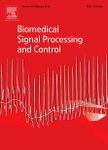版权所有:内蒙古大学图书馆 技术提供:维普资讯• 智图
内蒙古自治区呼和浩特市赛罕区大学西街235号 邮编: 010021

作者机构:Univ Canterbury Dept Mech Engn Private Bag 4800 Christchurch 8140 New Zealand Karlsruhe Inst Technol Dept Mech Engn POB 3640 D-76021 Karlsruhe Germany
出 版 物:《BIOMEDICAL SIGNAL PROCESSING AND CONTROL》 (生物医学信号处理与控制)
年 卷 期:2017年第32卷第0期
页 面:143-149页
核心收录:
学科分类:0831[工学-生物医学工程(可授工学、理学、医学学位)] 10[医学]
主 题:Particle image velocimetry Hemodynamics Autoregressive correlation modelling Fluid dynamics Experimental fluids
摘 要:Various anomalies in arterial geometry can cause serious hemodynamic dysfunction. In particular, stenosed arteries can cause reduced blood flow, excess stress on the heart, and elements can shear off causing blockage, which in the brain leads to stroke. This research assesses whether pressure signals obtained close to a stenosis are distinct from signals observed in other areas of the artery. Particle image velocimetry was used to determine the fluid velocity field within a compliant phantom that mimicked a stenosis in the carotid artery during physiological pulsatile pressure waves. The Navier-Stokes representation of the velocity fields were used to determine the pressure responses across the domain. A three-parameter regressive cross-correlation was used to calibrate the output pressure responses against the pressure input signal. The transform between the input-output pressure signals allowed detection of the region immediately downstream of the stenosis. In particular, if the cross correlative parameter that relates the instantaneous transfer across the input-output signals was greater than the delayed transfer parameter a stenosis is present. In contrast, the delayed transfer parameter was larger for the region upstream of the stenosis. This outcome is particularly valuable as it does not require calibration of the absolute pressure, which can be difficult to determine physiologically due to factors such as arterial geometry and intrathoracic pressure. However, the outcomes need to be validated in more geometries prior to clinical validation. (C) 2016 Elsevier Ltd. All rights reserved.